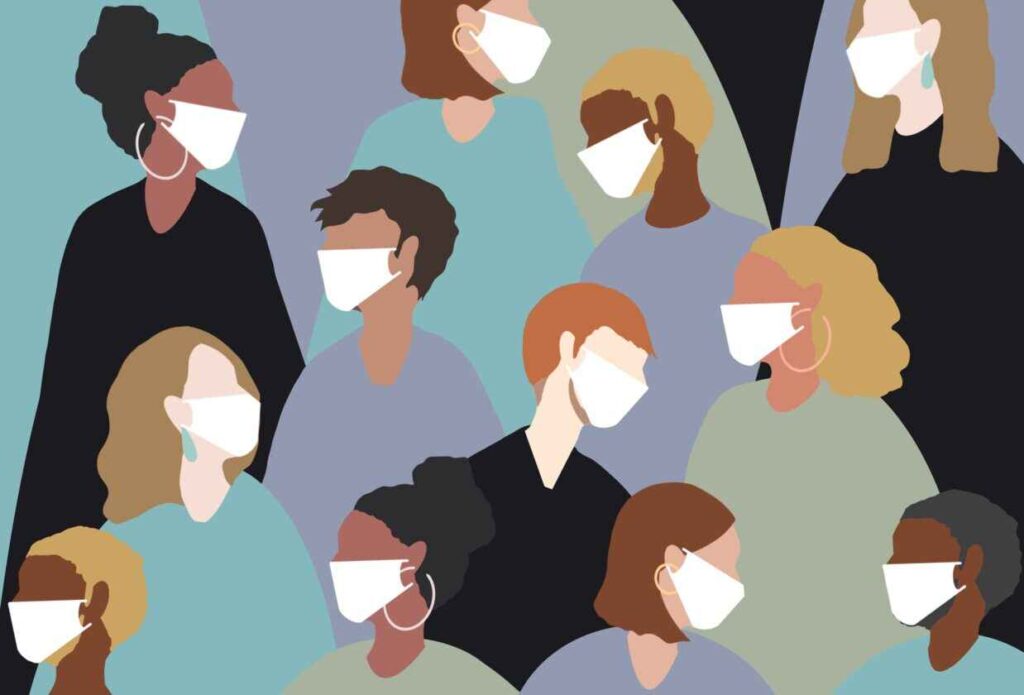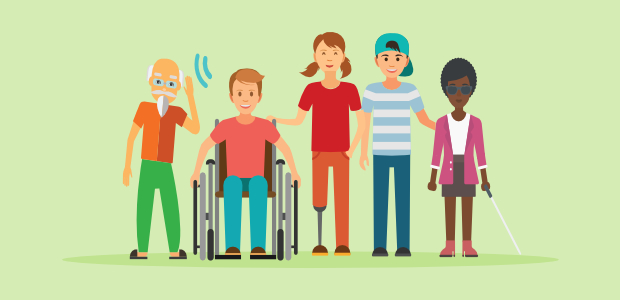Written by Geri Medina (she/her/hers)
In honor of National Public Health Week 2022
The COVID-19 pandemic has been a critical moment for public health in working toward accessibility and health equity.

In the early stages of the pandemic, universal mask mandates and social distancing policies were implemented to protect citizens from the mass transmission of COVID-19, which studies show have been low-burden, effective strategies for preventing significant spread and saving lives. Hotels were converted as shelter for unhoused people to promote social distancing and safe shelter. As COVID-19 testing became available, testing sites were launched, free to all, without ID or health insurance required. To address concerns on testing accessibility, early outreach efforts, such as those by Black clinicians who provided 24-hour walk-in testing in predominantly Black neighborhoods of Philadelphia, were crucial in addressing accessibility gaps in marginalized communities. Schools pivoted to virtual learning to continue learning while keeping communities safe. Health care providers transitioned to telehealth services: in the first 6 months of the pandemic, telehealth use soared from less than 1% of outpatient visits pre-pandemic to 13% of outpatient visits, allowing patients to access care without transportation barriers or risk of transmission and allowing more flexibility for providers and patients. Some states, like Massachusetts, provided COVID-19 sick pay so employees could recuperate from illness, mitigate transmission at work, and not lose wages.
When vaccines against COVID-19 were federally authorized, vaccines, like tests, were free to all, without ID or health insurance required. However, disparities in access to these vaccines required proactive outreach in marginalized communities; in Chelsea, MA, a collaborative effort between community groups, clinicians, and local government developed a vaccination program that provided mobile clinics in the community. Community-led outreach strategies like door-to-door canvassing and providing at-home vaccinations have also been critical in boosting vaccination in these communities and reaching those unable to attend a clinic in-person. Even the cost of hospital COVID-19 care was covered at no cost to uninsured patients by the federal government during the pandemic; which, so far, has averaged $11,267-$47,454 per hospitalized patient. The American Rescue Plan of 2021 also expanded eligibility so that more uninsured people could be eligible for insurance during the pandemic. In the past year, the government, in collaboration with the U.S Postal Service, has made rapid at-home test kits available for free and delivered to residences, or available for pick-up through local pharmacies, community health centers, and other sites.
These measures, despite inadequacies, were implemented quickly, universally in many instances, and intended to remove barriers to access–a mass coordination and effort between the governmental sector, community-based organizations, and the public health sector to protect the public’s health on a scale like never before. However, we are currently in a moment of the pandemic where prevention measures are being lifted due to increased vaccination and indications of lower community transmission The lessons we have learned and applied on health equity and accessibility during the pandemic will be essential in continuing to protect those most vulnerable to the outcomes of COVID-19.
How can we utilize the lessons and gains we’ve made during the pandemic going forward?

Planning for equity. Availability does not equal Accessibility. As we learned in the earlier stages of the pandemic, planning for equity has been essential in closing the COVID-19 equity gap. Strategies that were implemented to address various social determinants of the pandemic, like barriers to social distancing, testing, vaccination, and health care across age, race, class, income, and disability, are the approaches we must apply and sustain toward other public health outcomes. Planning for equity during the pandemic also involved coordination and investment across sectors to implement. Community-based groups lead significant efforts in their own communities to boost education, testing and vaccination, in addition to providing other material needs like rent assistance, food, etc.– which decades of research show are critical in reducing health disparities. Sustaining cross-sector coordination and partnerships and allowing community-based groups to play central roles in leading equity strategies can be highly effective in closing health equity gaps for other public health outcomes.
Centering the most vulnerable. We can’t talk about equity without identifying and centering the most vulnerable. Disabled and immunocompromised people, in addition to communities of color and low-income communities, have been at highest risk for COVID-19 complications, and are the same groups often at risk for other health outcomes. Early prevention strategies and efforts that have been implemented throughout the pandemic have been effective in protecting vulnerable groups from severe outcomes, while by extension also protecting those less at risk from potential transmission and risks of developing long-COVID. Abandoning policies and strategies that have worked to keep our most vulnerable safe during the pandemic are steps away from achieving health equity gains, and also puts the rest of us at risk.
As we continue into year three of the pandemic, this will be a critical moment for public health to continue to build off of the accessibility and equity work already implemented throughout the past two years and apply these strategies toward other public health outcomes. We have seen that with the proper cross-sector coordination, rapid response, and investment, health equity can be activated. And when we apply a framework of centering the most vulnerable in our public health aims, we can reach the goal of health equity; the attainment of the highest level of health for all people.